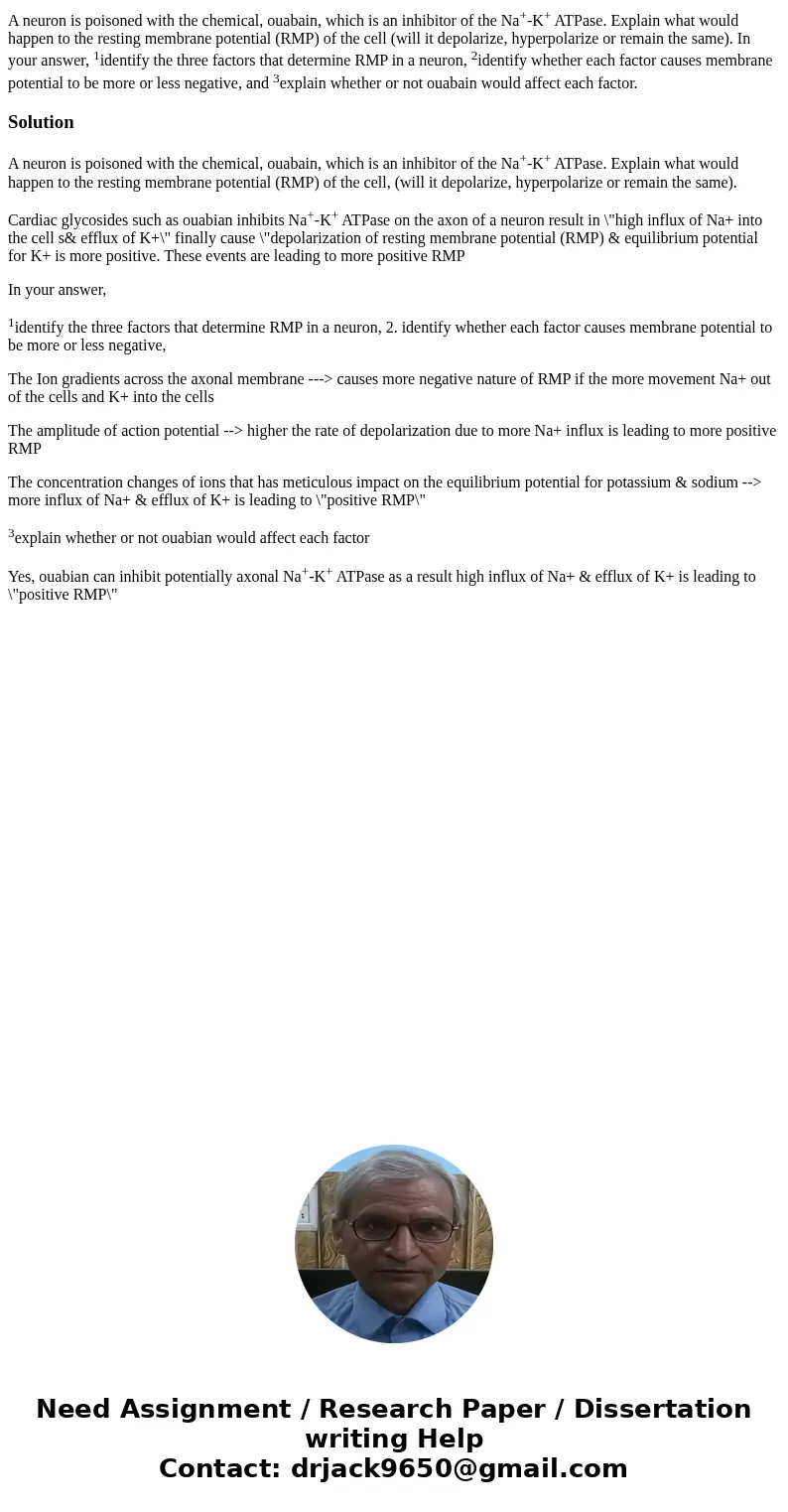A neuron is poisoned with the chemical ouabain which is an i
A neuron is poisoned with the chemical, ouabain, which is an inhibitor of the Na+-K+ ATPase. Explain what would happen to the resting membrane potential (RMP) of the cell (will it depolarize, hyperpolarize or remain the same). In your answer, 1identify the three factors that determine RMP in a neuron, 2identify whether each factor causes membrane potential to be more or less negative, and 3explain whether or not ouabain would affect each factor.
Solution
A neuron is poisoned with the chemical, ouabain, which is an inhibitor of the Na+-K+ ATPase. Explain what would happen to the resting membrane potential (RMP) of the cell, (will it depolarize, hyperpolarize or remain the same).
Cardiac glycosides such as ouabian inhibits Na+-K+ ATPase on the axon of a neuron result in \"high influx of Na+ into the cell s& efflux of K+\" finally cause \"depolarization of resting membrane potential (RMP) & equilibrium potential for K+ is more positive. These events are leading to more positive RMP
In your answer,
1identify the three factors that determine RMP in a neuron, 2. identify whether each factor causes membrane potential to be more or less negative,
The Ion gradients across the axonal membrane ---> causes more negative nature of RMP if the more movement Na+ out of the cells and K+ into the cells
The amplitude of action potential --> higher the rate of depolarization due to more Na+ influx is leading to more positive RMP
The concentration changes of ions that has meticulous impact on the equilibrium potential for potassium & sodium --> more influx of Na+ & efflux of K+ is leading to \"positive RMP\"
3explain whether or not ouabian would affect each factor
Yes, ouabian can inhibit potentially axonal Na+-K+ ATPase as a result high influx of Na+ & efflux of K+ is leading to \"positive RMP\"

 Homework Sourse
Homework Sourse